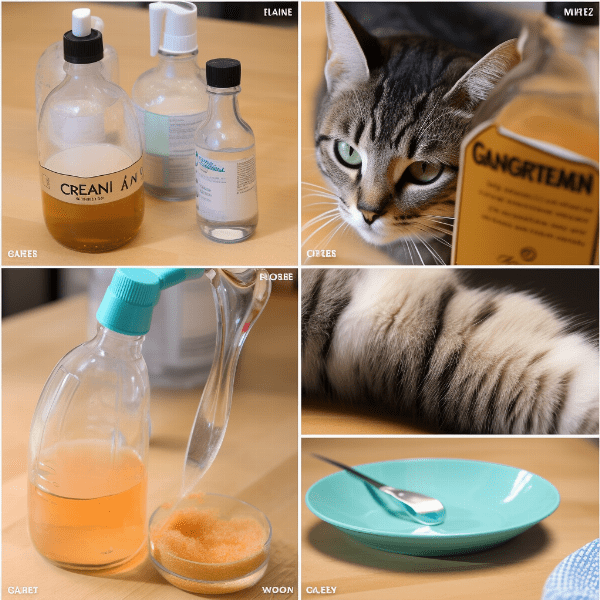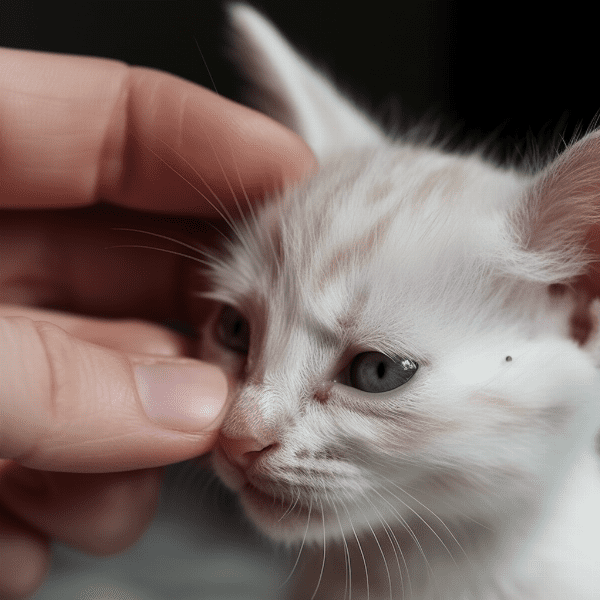Table of Contents
- Understanding Cat Ear Wax Buildup
- Signs of Excessive Ear Wax in Cats
- Precautions Before Cleaning Cat Ears
- Top 5 Cat Ear Cleaning Solutions
- Step-by-Step Guide to Clean Cat Ears
- Common Mistakes to Avoid While Cleaning Cat Ears
- When to Seek Professional Help for Cat Ear Wax Removal
- Preventing Cat Ear Wax Buildup
- Importance of Regular Cat Ear Cleaning
- Conclusion: Happy and Healthy Cat Ears
Understanding Cat Ear Wax Buildup
Ear wax is a natural secretion produced by glands in a cat’s ear canal. The wax acts as a protective barrier against debris, dust, and bacteria from entering the ear canal. In normal circumstances, ear wax is gradually pushed out of the ear canal and falls out during routine grooming.
However, in some cats, ear wax can accumulate and lead to a blockage. When too much ear wax builds up, it can cause discomfort, itching, and even lead to infections. It is important to understand why and how ear wax buildup occurs to prevent and manage it effectively.
Causes of Ear Wax Buildup in Cats
There are several factors that can contribute to ear wax buildup in cats. Some of the most common causes include:
- Genetics: Some cats may be predisposed to producing excessive ear wax due to genetic factors.
- Ear mites: Ear mites are a common cause of ear wax buildup in cats. They feed on ear wax and other debris in the ear canal, which can lead to a blockage.
- Allergies: Allergies can cause inflammation in a cat’s ear canal, which can lead to increased ear wax production.
- Ear infections: Ear infections can cause a buildup of pus and wax in a cat’s ear canal.
- Overproduction of wax: Some cats may simply produce more ear wax than others.
Symptoms of Ear Wax Buildup in Cats
It is important to recognize the signs of ear wax buildup in cats so that you can address the issue promptly. Some of the most common symptoms of ear wax buildup in cats include:
- Scratching or rubbing the ears excessively
- Shaking the head frequently
- Discharge or foul odor coming from the ear
- Redness or swelling in the ear canal
- Sensitivity or pain when touching the ear
- Loss of balance or coordination
If you notice any of these symptoms, it is important to schedule an appointment with your veterinarian to determine the cause and appropriate treatment.
Understanding the causes and symptoms of ear wax buildup in cats is the first step to effectively managing and preventing it. By taking preventative measures and regularly cleaning your cat’s ears, you can help ensure they stay happy and healthy.
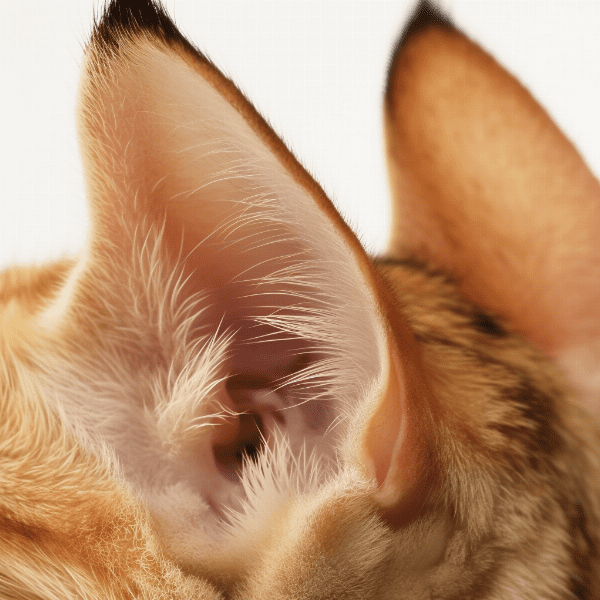
Signs of Excessive Ear Wax in Cats
As mentioned earlier, ear wax buildup in cats can lead to discomfort, infections, and other health issues. Recognizing the signs of excessive ear wax can help you take action before the problem becomes severe.
Visible Signs
One of the most apparent signs of excessive ear wax in cats is visible buildup in the ear canal. You may notice a dark, waxy substance in the ear or even a blockage that obstructs the ear canal entirely.
Behavioral Changes
Cats with excessive ear wax may exhibit changes in their behavior. They may scratch or rub their ears more frequently, tilt their head to one side, or shake their head frequently. These behaviors are signs that the cat is experiencing discomfort or pain in their ears.
Foul Odor
A foul odor coming from the cat’s ear is another sign of excessive ear wax buildup. The odor is caused by bacteria and other microorganisms that thrive in the warm, moist environment of the ear canal.
Redness or Swelling
Excessive ear wax can cause inflammation in the ear canal, leading to redness and swelling. The cat may also experience sensitivity or pain when you touch their ears.
Discharge
Discharge from the ear is a common symptom of excessive ear wax buildup. The discharge may be yellow or brown and have a foul odor. It is important to note that discharge can also be a sign of an ear infection, so it is important to consult your veterinarian.
If you notice any of these signs in your cat, it is important to schedule an appointment with your veterinarian. They can determine the underlying cause of the excessive ear wax and recommend appropriate treatment. Regular ear cleaning can also help prevent excessive ear wax buildup in cats.
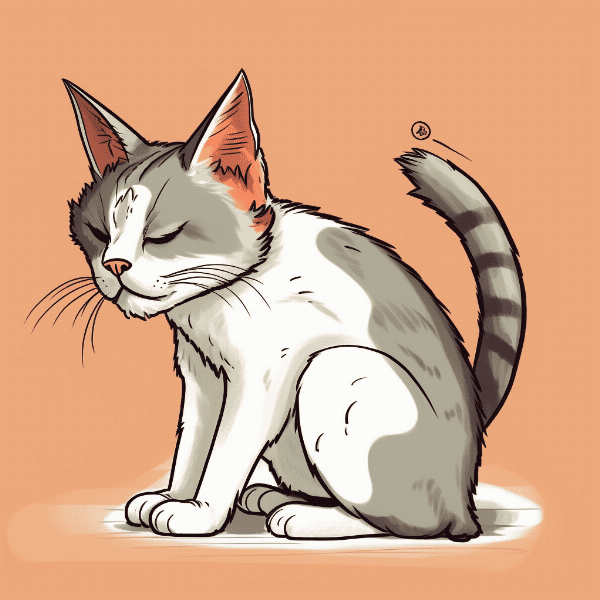
Precautions Before Cleaning Cat Ears
Cleaning your cat’s ears is an important part of their grooming routine. However, it is important to take certain precautions to ensure their safety and avoid causing any harm.
Choose the Right Time
It is essential to choose the right time to clean your cat’s ears. Ideally, you should choose a time when your cat is relaxed and calm, such as after a meal or nap. Avoid cleaning their ears when they are agitated or anxious, as this can cause them to move around and potentially injure themselves.
Gather Necessary Supplies
Before you start cleaning your cat’s ears, make sure you have all the necessary supplies within reach. This includes ear cleaning solution, cotton balls or pads, and a towel. You may also want to consider wearing gloves to protect your hands.
Be Gentle
When cleaning your cat’s ears, be gentle and avoid applying too much pressure. Use a soft, damp cotton ball or pad to gently wipe the inside of the ear canal. Avoid using Q-tips or other objects that can push debris further into the ear canal and potentially injure your cat.
Watch for Signs of Discomfort
While cleaning your cat’s ears, watch for signs of discomfort, such as twitching or shaking their head, or vocalizing. If your cat appears uncomfortable or in pain, stop immediately and consult your veterinarian.
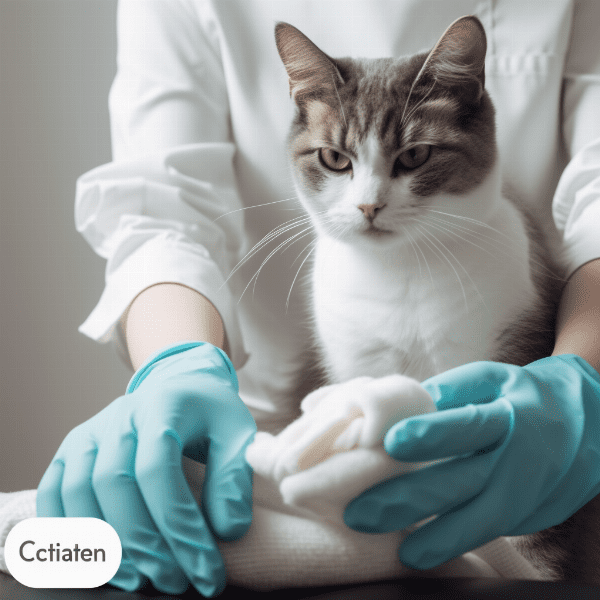
Top 5 Cat Ear Cleaning Solutions
There are several Cat ear cleaning solutions available on the market, each with its own unique benefits. Here are the top five cat ear cleaning solutions that are safe and effective for use:
1. Vet’s Best Ear Relief Wash
This ear cleaning solution is made with all-natural ingredients such as aloe vera, chamomile, and tea tree oil. It helps soothe and clean your cat’s ears while reducing ear odor and inflammation.
2. Zymox Otic Pet Ear Treatment
This ear cleaning solution is enzyme-based, making it a powerful solution for treating ear infections in cats. It also has a long-lasting effect that helps prevent future infections.
3. TropiClean Ear Wash
TropiClean Ear Wash is a gentle and effective solution that helps remove wax and debris from your cat’s ears. It is made with all-natural ingredients such as kiwi and coconut to help soothe and protect your cat’s ears.
4. Burt’s Bees for Pets Ear Cleaner
Burt’s Bees for Pets Ear Cleaner is made with natural ingredients like witch hazel and rosemary. It helps clean and soothe your cat’s ears, while also moisturizing the skin in the ear canal.
5. Dechra Epi-Otic Advanced Ear Cleaner
Dechra Epi-Otic Advanced Ear Cleaner is a powerful solution that helps clean and dry your cat’s ears while also preventing bacterial and fungal infections. It is formulated with salicylic acid and ceramides to help restore and maintain the skin’s natural pH balance.
When choosing an ear cleaning solution for your cat, it is important to consult your veterinarian. They can recommend a product that is safe and effective for your cat’s specific needs. It is also essential to follow the instructions on the product label and take necessary precautions when cleaning your cat’s ears.

Step-by-Step Guide to Clean Cat Ears
Step 1: Prepare the Cleaning Solution and Supplies
Gather all necessary supplies such as ear cleaning solution, cotton balls or pads, and a towel. Make sure the ear cleaning solution is at room temperature and shake well before use.
Step 2: Restrain Your Cat
Restrain your cat gently but firmly to prevent them from moving around during the ear cleaning process. You can wrap them in a towel or ask someone to help you hold them still.
Step 3: Apply the Ear Cleaning Solution
Pour a few drops of the ear cleaning solution into the cat’s ear canal. Gently massage the base of the ear for 20-30 seconds to distribute the solution evenly.
Step 4: Wipe Away Excess Solution
Use a cotton ball or pad to wipe away any excess solution and ear wax from the ear canal. Avoid using Q-tips or other objects that can push debris further into the ear canal.
Step 5: Repeat the Process on the Other Ear
Repeat the above steps on the other ear, using a fresh cotton ball or pad for each ear.
Step 6: Reward Your Cat
After you have finished cleaning your cat’s ears, reward them with a treat or some affection to help them associate ear cleaning with positive experiences.
It is important to note that not all cats require ear cleaning, and some may be more sensitive to the process than others. If you are unsure about how to clean your cat’s ears or if your cat shows signs of discomfort, consult your veterinarian for guidance.

Common Mistakes to Avoid While Cleaning Cat Ears
Cleaning your cat’s ears can be a delicate process, and there are several common mistakes that cat owners should avoid to prevent harm or injury to their cat.
Using Inappropriate Cleaning Solutions
One of the most common mistakes is using inappropriate cleaning solutions on your cat’s ears. Avoid using harsh chemicals, alcohol-based solutions, or hydrogen peroxide, as they can cause irritation and even damage the skin in the ear canal. Consult your veterinarian to recommend a suitable ear cleaning solution for your cat.
Pushing Debris Further into the Ear Canal
Another common mistake is pushing debris further into the ear canal. Avoid using Q-tips or other objects that can push debris deeper into the ear canal, potentially causing injury or irritation. Instead, use a soft cotton ball or pad to gently wipe away excess solution and ear wax.
Using Too Much Pressure
Using too much pressure while cleaning your cat’s ears can also cause harm. Be gentle and avoid applying too much pressure or force. Use a light touch and massage the base of the ear gently to help distribute the cleaning solution evenly.
Cleaning Too Frequently
Cleaning your cat’s ears too frequently can also be a mistake. Over-cleaning can cause irritation, dryness, and even lead to infections. Consult your veterinarian to recommend an appropriate cleaning schedule based on your cat’s specific needs.
Not Seeking Professional Help When Needed
If you notice any signs of discomfort, pain, or bleeding while cleaning your cat’s ears, stop immediately and consult your veterinarian. They can determine the underlying cause of the issue and recommend appropriate treatment.
By avoiding these common mistakes, you can help ensure your cat’s ear cleaning experience is safe and effective. Regular ear cleaning can help prevent excessive ear wax buildup and other ear-related health issues in cats.
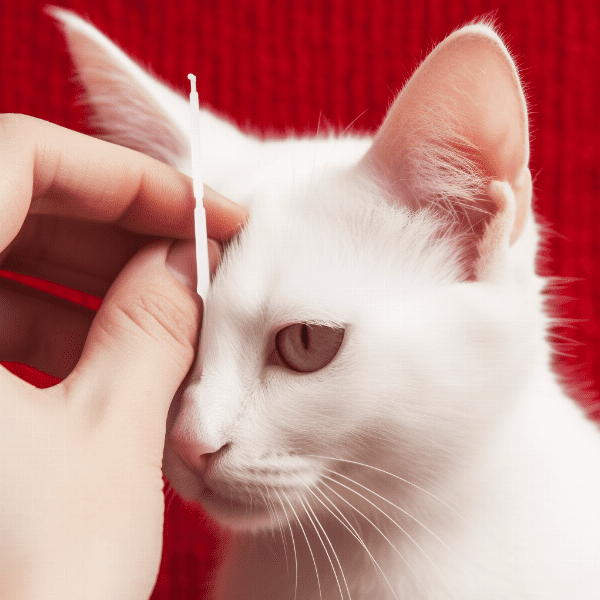
When to Seek Professional Help for Cat Ear Wax Removal
While regular ear cleaning can help prevent ear wax buildup in cats, there may be times when professional help is needed to remove excessive ear wax. Here are some signs that indicate it may be time to seek professional help for Cat ear wax removal.
Persistent Symptoms
If your cat is experiencing persistent symptoms such as frequent shaking of the head, scratching or rubbing their ears excessively, or exhibiting signs of discomfort or pain, it may be a sign of excessive ear wax buildup. In such cases, it is recommended to schedule an appointment with your veterinarian.
Foul Odor or Discharge
If you notice a foul odor or discharge coming from your cat’s ears, it may be a sign of an underlying ear infection or excessive ear wax buildup. Your veterinarian can diagnose the underlying issue and recommend appropriate treatment.
Bleeding or Injury
If your cat experiences bleeding or injury during the ear cleaning process, stop immediately and seek professional help. Injury to the ear canal can cause severe pain, discomfort, and even lead to infections.
Chronic Health Conditions
If your cat has a chronic health condition that affects their ears, such as allergies or an autoimmune disorder, it may be more challenging to manage excessive ear wax buildup. In such cases, seeking professional help is recommended to prevent complications.
Anatomical Abnormalities
Some cats may have anatomical abnormalities that make it difficult to clean their ears or manage excessive ear wax buildup. Seeking professional help can help identify the underlying issue and recommend appropriate treatment.
In summary, if your cat is experiencing persistent symptoms, foul odor or discharge, bleeding or injury, chronic health conditions, or anatomical abnormalities, it is recommended to seek professional help for cat ear wax removal. Regular ear cleaning and preventative measures can help prevent excessive ear wax buildup in cats and maintain their overall health and well-being.

Preventing Cat Ear Wax Buildup
Prevention is the best approach to managing cat ear wax buildup. Here are some tips to help prevent excessive ear wax in cats.
Regular Ear Cleaning
Regular ear cleaning is essential to prevent excessive ear wax buildup in cats. Consult your veterinarian to recommend an appropriate cleaning schedule and ear cleaning solution for your cat.
Proper Diet and Hydration
Proper diet and hydration can help prevent excessive ear wax buildup in cats. Ensure your cat is consuming a balanced diet that provides all essential nutrients and drinking enough water to stay hydrated.
Avoid Overuse of Ear Medications
Overuse of ear medications can cause irritation and inflammation in the ear canal, leading to excessive ear wax buildup. Follow the instructions on the medication label and consult your veterinarian before using any ear medications.
Regular Veterinary Check-Ups
Regular veterinary check-ups can help identify and manage underlying health conditions that may contribute to excessive ear wax buildup in cats. Schedule annual check-ups and seek professional help if you notice any signs of discomfort or pain.
Avoid Excessive Ear Cleaning
While regular ear cleaning is essential, excessive ear cleaning can cause dryness, irritation, and even lead to infections. Follow your veterinarian’s recommended cleaning schedule and avoid over-cleaning.
By following these preventative measures, you can help prevent excessive ear wax buildup in cats and maintain their overall health and well-being. If you notice any signs of discomfort or pain in your cat’s ears, seek professional help immediately to prevent complications.

Importance of Regular Cat Ear Cleaning
Regular cat ear cleaning is an essential part of maintaining your cat’s overall health and well-being. Here are some reasons why regular cat ear cleaning is important.
Prevent Excessive Ear Wax Buildup
Regular ear cleaning can help prevent excessive ear wax buildup in cats. Excessive ear wax can cause irritation, inflammation, and even lead to infections if left untreated. Regular cleaning can help prevent these issues and keep your cat’s ears healthy.
Detect and Treat Ear Infections
Regular ear cleaning can also help detect and treat ear infections in cats. If left untreated, ear infections can cause pain, discomfort, and even lead to hearing loss. Regular ear cleaning can help identify any signs of ear infections early on and seek professional help promptly.
Improve Quality of Life
Regular ear cleaning can improve your cat’s quality of life by preventing discomfort and pain associated with excessive ear wax buildup or ear infections. Clean ears also help your cat hear better, which can improve their overall mood and behavior.
Strengthen Bond with Your Cat
Regular ear cleaning can also strengthen the bond between you and your cat. When done correctly and gently, ear cleaning can be a positive experience for your cat and help them associate the process with positive experiences such as treats or affection.
In summary, regular cat ear cleaning is crucial to prevent excessive ear wax buildup, detect and treat ear infections, improve your cat’s quality of life, and strengthen the bond between you and your cat. Follow your veterinarian’s recommended cleaning schedule and take necessary precautions to ensure your cat’s safety and comfort during the ear cleaning process.

Conclusion: Happy and Healthy Cat Ears
Caring for your cat’s ears is an essential part of maintaining their overall health and well-being. Regular ear cleaning can prevent excessive ear wax buildup, detect and treat ear infections, improve your cat’s quality of life, and strengthen the bond between you and your cat.
By understanding the causes of ear wax buildup, signs of excessive ear wax, precautions before cleaning, and the proper technique for cleaning your cat’s ears, you can help ensure a safe and effective ear cleaning experience for your cat.
It is important to consult your veterinarian for guidance and recommendations on ear cleaning solutions and cleaning schedules that are safe and effective for your cat. Avoid common mistakes such as using inappropriate cleaning solutions, pushing debris further into the ear canal, using too much pressure, cleaning too frequently, and not seeking professional help when needed.
Prevent excessive ear wax buildup by providing a proper diet and hydration, avoiding overuse of ear medications, scheduling regular veterinary check-ups, and avoiding excessive ear cleaning.
By following these tips and taking necessary precautions, you can help ensure happy and healthy cat ears for your feline companion.


